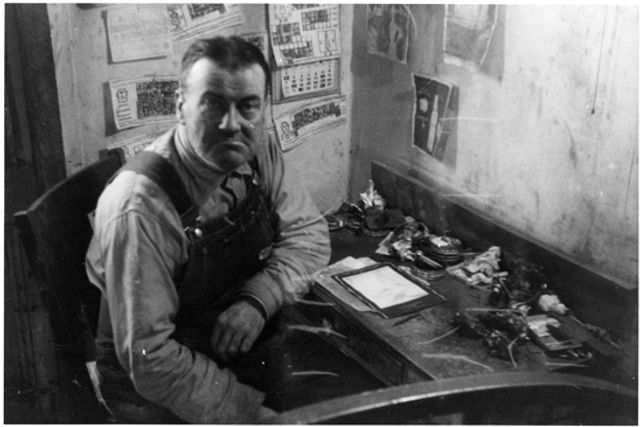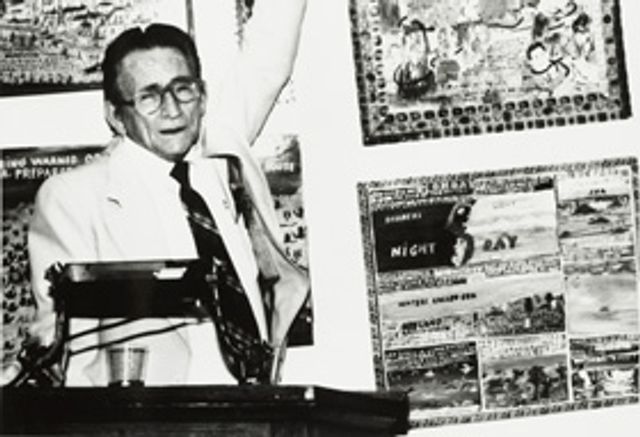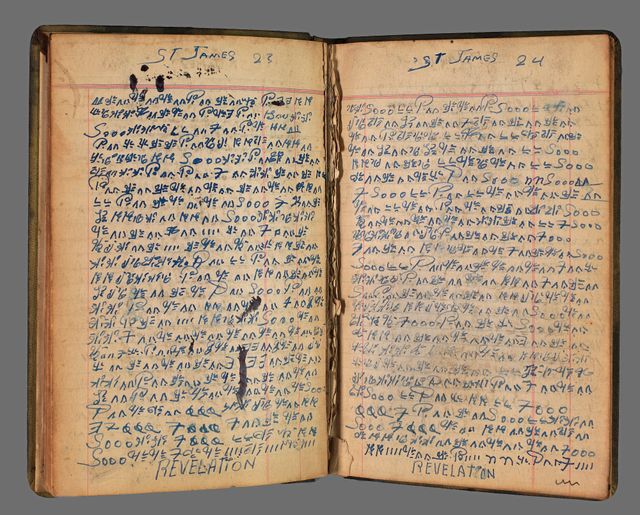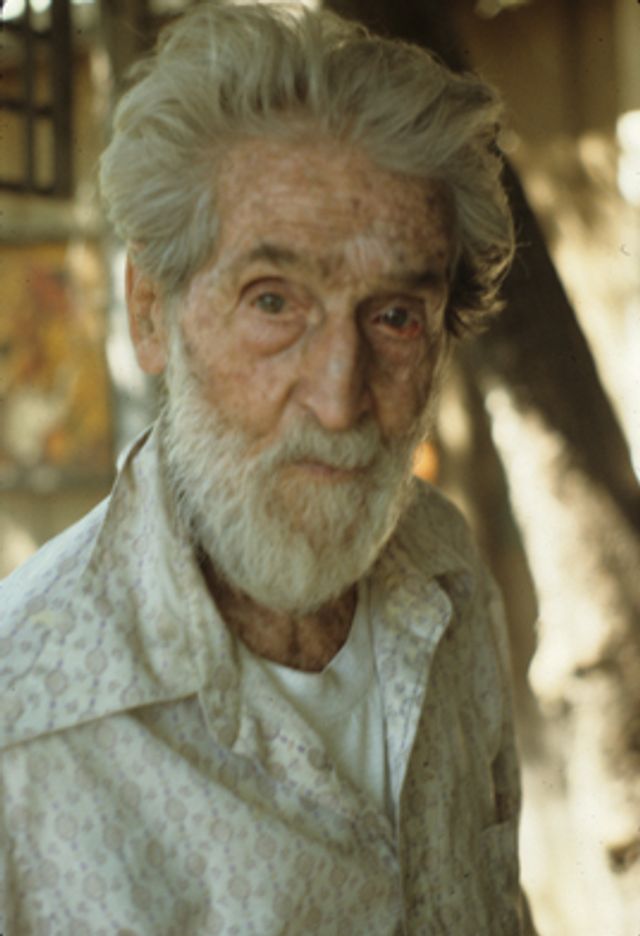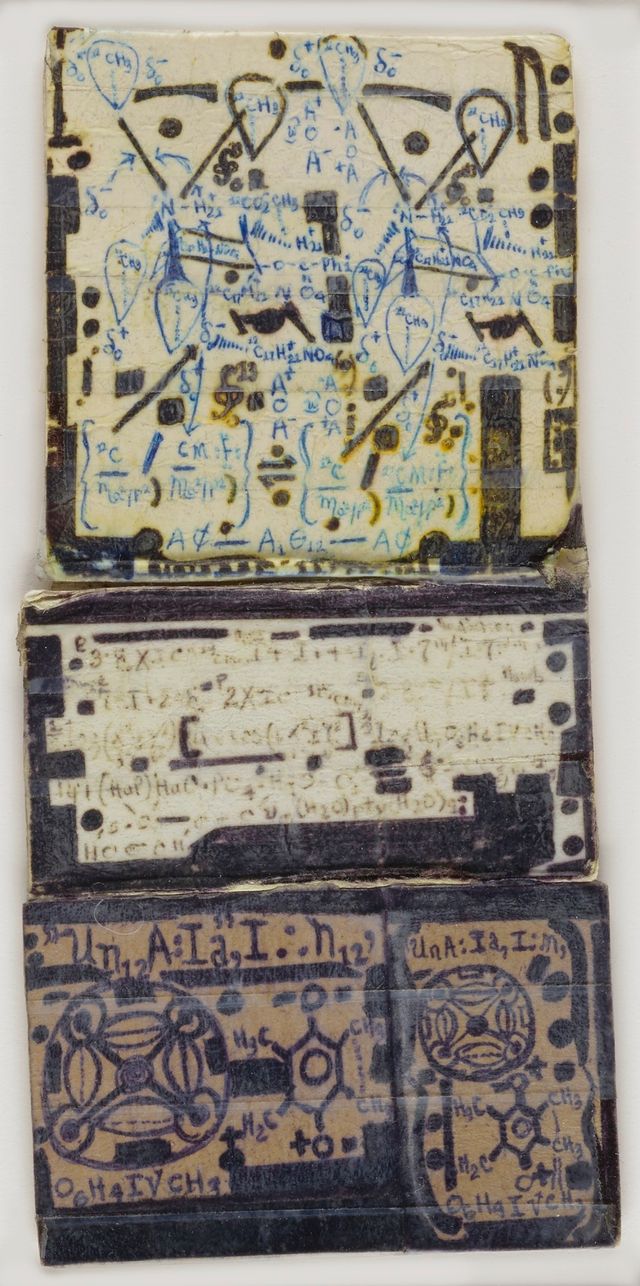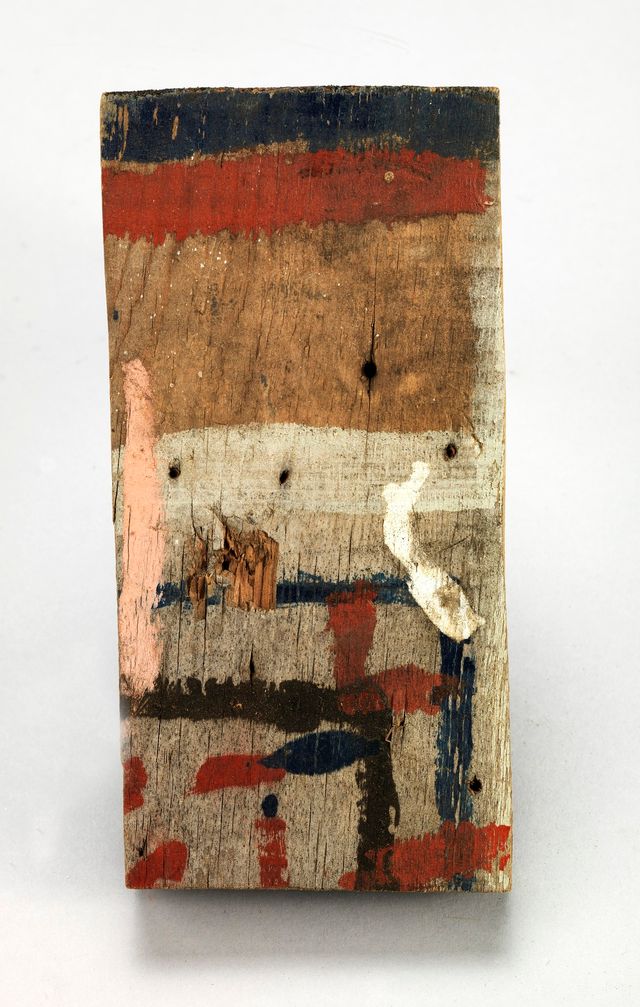
The Smithsonian American Art Museum’s collection of folk and self-taught art represents the powerful vision of America’s untrained and vernacular artists. SAAM is one of the only major museums to clearly advocate for a diverse populist and uniquely American voice within the context of what is traditionally considered great art.
Themes
Artists who are deeply engaged with personal exploration often create works of profound complexity. Recurring themes include struggle and persistence, salvation and protection, and the reshaping of personal worlds through creative expression.
The Collection
SAAM was among the first major museums to champion and collect works by self-taught artists. This aspect of SAAM’s collection spans works that emanate from folk traditions, such as quilting and woodcarving, to highly innovative works of great personal vision. It began in 1970, after the astonishing Throne of The Third Heaven of The Nations’ Millennium General Assembly, made by James Hampton, came to light in a makeshift studio not far from the museum following the artist’s death. Several donors made it possible for this iconic work, understood as a seminal representation of African American cultural and artistic heritage, to become the cornerstone of a collection that aimed to tell an ever-expanding story of America through the art of its people.
Since it acquired Hampton’s “Throne,” the museum has been recognized internationally as a leader in championing the importance of works by artists who have no formal art training. In the early 1980s and 1990s, Chuck and Jan Rosenak donated many important works to the museum. SAAM’s largest single acquisition of works by self-taught artists came in 1986 with more than 500 works from the ground-breaking collection of Herbert Waide Hemphill Jr., which firmly established the museum’s ongoing commitment to this work. Important gifts from Bill Arnett, David L. Davies, the Kallir Family, Josh Feldstein, Margaret Parsons, Judy A. Saslow, Patricia S. Smith, Mike Wilkins and Sheila Duignan, and others followed. In 2016, Douglas O. Robson donated ninety-three works of art from the collection of his mother, Margaret Z. Robson.
Today, SAAM’s collection of folk and self-taught art features more than 400 artists and 1,300 works of art. The collection is one of the most visited and widely admired of its kind.
Selected Works
Related Artists
Consuelo "Chelo" González Amézcua was a self-taught artist born in Piedras Negras, Mexico, in 1903. She immigrated to the United States in 1913.
Felipe Archuleta makes his sculptures out of wood and other materials he finds himself or obtains from his neighbors. He uses carpenter's tools to fashion the various parts of each work, and nails and glue to assemble them.
Alexander Bogardy immigrated to America as a young child and settled in Baltimore. He changed careers frequently during his life, spending time as a violinist, boxer, mechanical engineer, and cosmetologist before he turned to painting.
David Butler was born in Good Hope, Louisiana, not far from New Orleans. Raised to revere biblical scripture and spirituality, Butler’s worldview became a cultural fusion.
James Castle lived his whole life in the Boise Basin of Idaho. He was deaf from birth, and despite some schooling, never became fluent in alternative forms of communication such as lipreading, signing, reading, or writing.
Davis developed his wood-carving skills on his own over a period of more than fifty years, beginning during his childhood in Fitzgerald, Georgia.
Thornton Dial was born into a sharecropping family in rural Alabama, on the eve of the Great Depression. He experienced the trauma and tumult of both Jim Crow segregation and the civil rights movement. Profoundly influenced by Dr.
William Edmondson, son of Tennessee slaves, did not consider himself an artist when he began carving around 1932, after retiring from his job as a laborer.
Ralph Fasanella celebrated the common man and tackled complex issues of postwar America in colorful, socially-minded paintings. Fasanella was born in the Bronx and grew up in the working-class neighborhoods of New York.
The Reverend Howard Finster is perhaps the most famous religious artist alive today.
Little is known about James Hampton, despite the grandeur of his self-chosen title, "Director, Special Projects for the State of Eternity." He was born in 1909 in Elloree, South Carolina, a small community of predominantly African-American sharecropper
Bessie Harvey used branches, roots, and found objects in sculptures that embody personal spirituality and speak about life’s challenges.
Miller was born in California’s Castro Valley in 1961 and joined Creative Growth, the same art studio where Judith Scott worked, in 1992. There he began making large, abstracted graphic works that function as communiqués in a self-shaped language.
Gertrude Morgan was raised as an active member of the Southern Baptist church. "My heavenly father called me in 1934 . . . . Go ye into yonder's world and sing with a loud voice you. . .
Anna Mary Robertson Moses grew up on a farm in upstate New York, where she worked as a hired girl, helping neighbors and relatives with cleaning, cooking, and sewing.
Ramírez left Mexico as a young man to seek employment in the United States.
According to Jon Serl, this painting began one afternoon with the drawing of a neighborhood boy who interrupted Serl's painting.
Bill Traylor was born around April 1, 1853, on the Alabama plantation of John Getson Traylor in Dallas County, near the towns of Pleasant Hill and Benton. Traylor and his siblings were born enslaved, as their parents had been.
A traditional Navajo sheepherder, Charlie Willeto began carving in the early 1960s, only a few years before his death.
Purvis Young paints on scrap lumber and plywood that he scavenges from the streets and vacant lots of Overtown, the historically black neighborhood where he lives in Miami, Florida, and whose long deterioration he has witnessed.



















